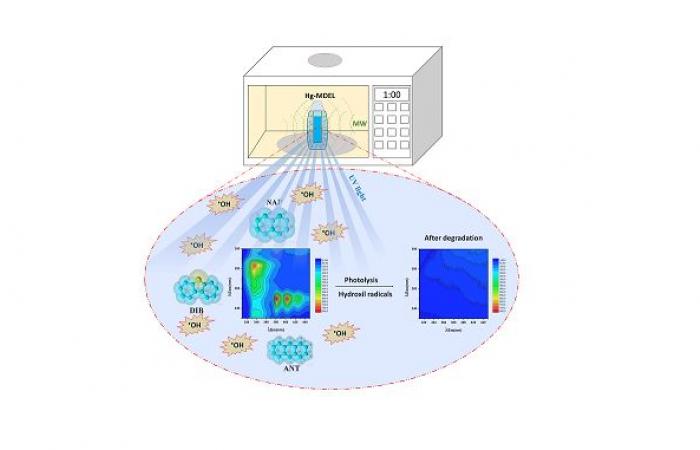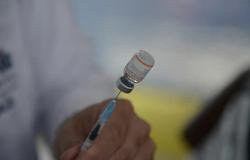FAPESP Agency* – Article published in the journal Catalysis Communications describes a simple, efficient and sustainable approach to degrade and quantitatively monitor a mixture of polycyclic aromatic hydrocarbons (PAHs) – emerging pollutants that reach various ecosystems impacted by fossil fuel spills and incorrect disposal of industrial waste.
Emerging pollutants are those chemical compounds that, although they can cause harm to health and the environment, are not yet monitored or removed by conventional water treatments. This is the case, for example, with bisphenol (present in certain types of plastic), some pesticides and substances found in beauty products and medicines.
In search of solutions to this problem, researchers from the Federal universities of São Carlos (UFSCar), Estadual Paulista (Unesp) and Federal universities of Paraíba (UFPB) prepared a mixture containing low concentrations of naphthalene, anthracene and dibenzothiophene in surface waters that simulated the environment Natural. Using fluorescence spectroscopy of excitation and emission matrices as a higher order analysis and calibration method through parallel factor analysis for data processing, it was possible to separate the spectral components of the mixture, identify and quantify each pollutant, in addition to other potential compounds present in natural waters.
This methodology allowed each analysis to be carried out in less than two minutes, without the production of any waste or the need for more expensive and sophisticated techniques, such as chromatography.
The mixture was then degraded using a photochemical system in which light is powered by microwave radiation. The system managed to degrade between 88% and 100% of organic pollutants in just one minute. The high performance was associated with the photolysis of water, effective in generating hydroxyl radicals, which are oxidizing species capable of degrading organic pollutants at high speed.
According to Kelvin Araújo, first author of the article and researcher at Functional Materials Development Center (CDMF), a Research, Innovation and Dissemination Center (CEPID) from FAPESP based at UFSCar, one of the highlights of the work was the choice of the PAH monitoring method. He highlights that the use of chromatography, a conventional technique for this analysis, is a limiting factor for the advancement of this type of research in many regions, as the equipment is expensive and the technique requires more sophisticated training.
To approach the work, a spectrofluorimeter was used, equipment that is more accessible to many laboratories. Analyzes are up to five times faster than in chromatography and no residue is generated after the process. The researcher also highlights that the demand for more accessible methods was observed in the research group, which has been working with water treatment processes and uses chromatography as an analytical technique.
Photochemical system
Another highlight of the work was the use of a microwave-driven photochemical system to degrade PAHs. Second Ailton Moreiracurrently a researcher at the Unesp Chemistry Institute in Araraquara and co-author of the article, achieving efficient and rapid degradation of emerging pollutants without the use of catalysts is a major challenge.
“This challenge increases when we work with mixtures of pollutants in natural waters, because the number of potential inhibitors of the degradation process is a reality. However, the photochemical system we used showed exceptional performance”, comments Moreira. He also highlights that this system has already proven effective in studies on the degradation of agricultural and pharmaceutical waste. The research also allows us to conclude that the photochemical system must be designed for application on larger scales, such as in water and effluent treatment plants.
The authors confirm that both the analytical method and the degradation process should be the subject of future studies in different projects led by group members. Among the next steps is the application of these technologies in a sewage treatment plant in the municipality of Gavião Peixoto, in São Paulo, to monitor and degrade emerging pollutants.
The article Fast and efficient processes for oxidation and monitoring of polycyclic aromatic hydrocarbons in environmental matrices can be read at: www.sciencedirect.com/science/article/pii/S1566736723002364.
* With information from CDMF.
Tags: Research obtains promising results controlling pollutants water
--





